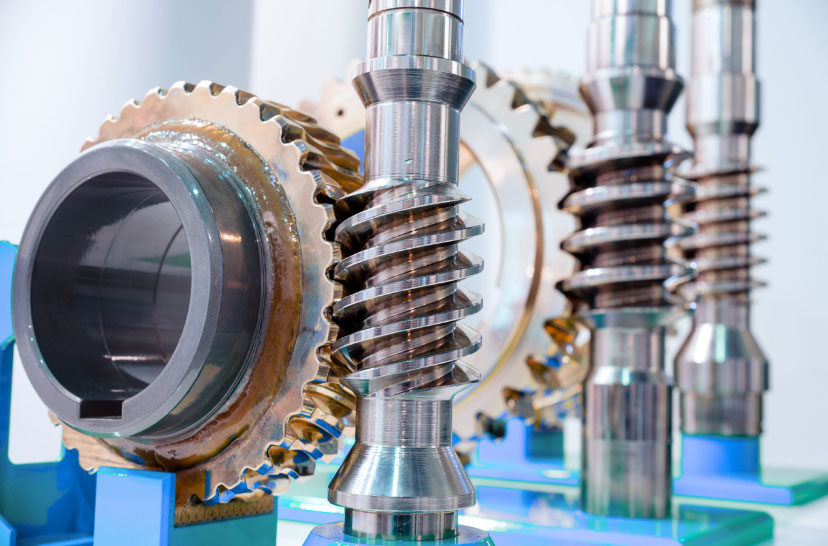Worm gear is essential components in many mechanical systems due to their ability to transmit high torque at low speeds while occupying minimal space. A comprehensive understanding of load capacity and stress distribution is crucial for optimizing the performance and longevity of worm gear systems. This article delves into the principles of load capacity and stress distribution in worm gear, offering insights into their mechanical properties, factors affecting performance, and practical applications.

Load Capacity of Worm Gear
Load capacity refers to the maximum load a worm gear can handle without experiencing failure or excessive wear. The load capacity of a worm gear depends on various factors, including material properties, gear geometry, lubrication, and operating conditions.
Factors Influencing Load Capacity
- Material Properties:
- Strength and Hardness: Materials with high tensile strength and hardness can withstand greater loads.
- Fatigue Resistance: Materials with high fatigue resistance endure cyclic loading better.
- Gear Geometry:
- Module and Pitch: The size and spacing of the gear teeth affect load distribution.
- Lead Angle: The angle of the worm thread influences the efficiency and load capacity.
- Lubrication:
- Type of Lubricant: The choice of lubricant impacts friction and wear.
- Lubrication Interval: Regular lubrication maintains optimal performance.
- Operating Conditions:
- Speed and Torque: Higher speeds and torques can increase wear and reduce load capacity.
- Temperature: Elevated temperatures can weaken materials and affect lubrication.
Calculating Load Capacity
The load capacity of worm gear can be calculated using standardized formulas that consider material properties, gear geometry, and operating conditions. These formulas help engineers design gears that meet specific load requirements.
Stress Distribution in Worm Gear
Stress distribution refers to how stress is spread across the gear teeth and other components under load. Proper stress distribution is vital for preventing gear failure and ensuring efficient operation.
Types of Stress in Worm Gear
- Contact Stress:
- Definition: Stress at the point where the worm and gear teeth come into contact.
- Impact: High contact stress can lead to pitting and surface fatigue.
- Bending Stress:
- Definition: Stress caused by the bending of gear teeth under load.
- Impact: Excessive bending stress can cause tooth fracture.
- Shear Stress:
- Definition: Stress parallel to the cross-section of the gear teeth.
- Impact: High shear stress can result in tooth shearing.
Factors Affecting Stress Distribution
- Tooth Profile:
- Involute vs. Non-Involute: Different tooth profiles distribute stress differently.
- Profile Modifications: Adjustments to the tooth profile can optimize stress distribution.
- Contact Ratio:
- High Contact Ratio: Distributes load over multiple teeth, reducing stress on individual teeth.
- Low Contact Ratio: Concentrates load on fewer teeth, increasing stress.
- Load Distribution:
- Uniform Load: Evenly distributed load minimizes stress concentrations.
- Localized Load: Uneven load distribution increases stress concentrations.
Practical Applications and Considerations
Understanding load capacity and stress distribution is essential for the practical application of worm gear in various industries. By optimizing these factors, engineers can design more reliable and efficient worm gear systems.
Application Examples
- Elevators and Lifts:
- Load Capacity: High load capacity is crucial for lifting heavy weights.
- Stress Distribution: Uniform stress distribution ensures smooth operation and longevity.
- Conveyor Systems:
- Load Capacity: Gears must handle continuous loading and unloading.
- Stress Distribution: Proper stress distribution prevents gear wear and failure.
- Automotive Applications:
- Load Capacity: Gears must endure varying loads and speeds.
- Stress Distribution: Optimized stress distribution enhances performance and durability.
Tables and Lists
Table 1: Factors Influencing Load Capacity
| Factor | Description |
|---|---|
| Material Properties | Strength, hardness, and fatigue resistance of the gear material. |
| Gear Geometry | Module, pitch, and lead angle of the gear teeth. |
| Lubrication | Type and interval of lubrication. |
| Operating Conditions | Speed, torque, and temperature conditions during operation. |
Table 2: Types of Stress in Worm Gear
| Stress Type | Description | Impact |
|---|---|---|
| Contact Stress | Stress at the contact point between worm and gear teeth. | Pitting, surface fatigue |
| Bending Stress | Stress caused by the bending of gear teeth under load. | Tooth fracture |
| Shear Stress | Stress parallel to the cross-section of the gear teeth. | Tooth shearing |
List of Factors Affecting Stress Distribution
- Tooth Profile: Involute vs. non-involute profiles and profile modifications.
- Contact Ratio: High vs. low contact ratio and their effects on load distribution.
- Load Distribution: Uniform vs. localized load distribution.
Conclusion
A thorough understanding of load capacity and stress distribution is essential for optimizing the performance and longevity of worm gear systems. By considering factors such as material properties, gear geometry, lubrication, and operating conditions, engineers can design worm gear that meet specific load requirements while ensuring efficient stress distribution. This knowledge is crucial for the successful application of worm gear in various industries, including elevators, conveyor systems, and automotive applications. As technology advances, continued research and development in this field will further enhance the capabilities and reliability of worm gear, solidifying their role in modern mechanical systems.
